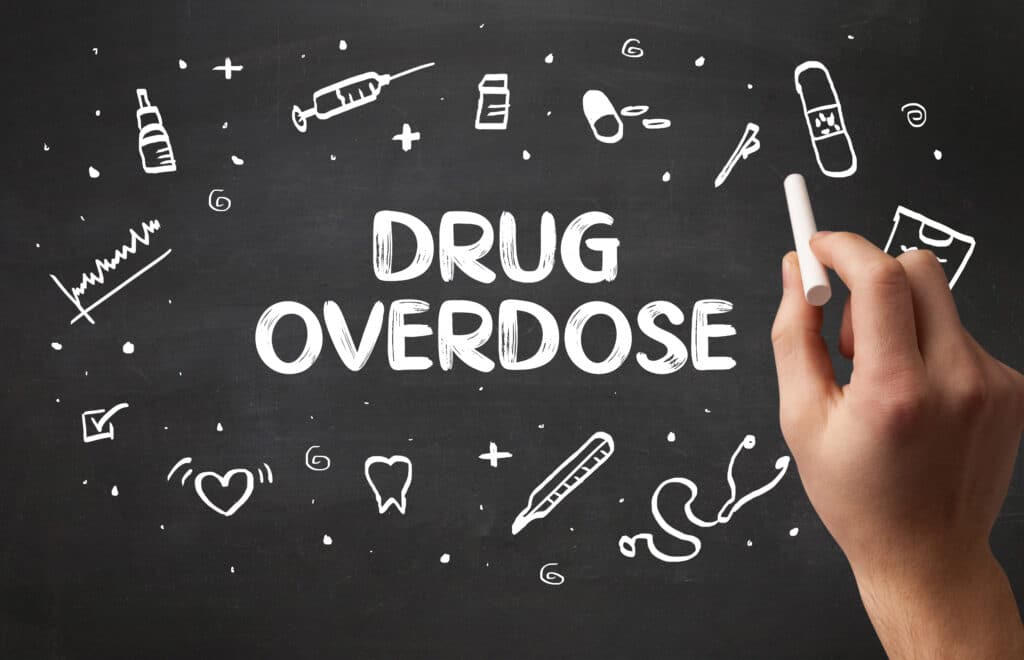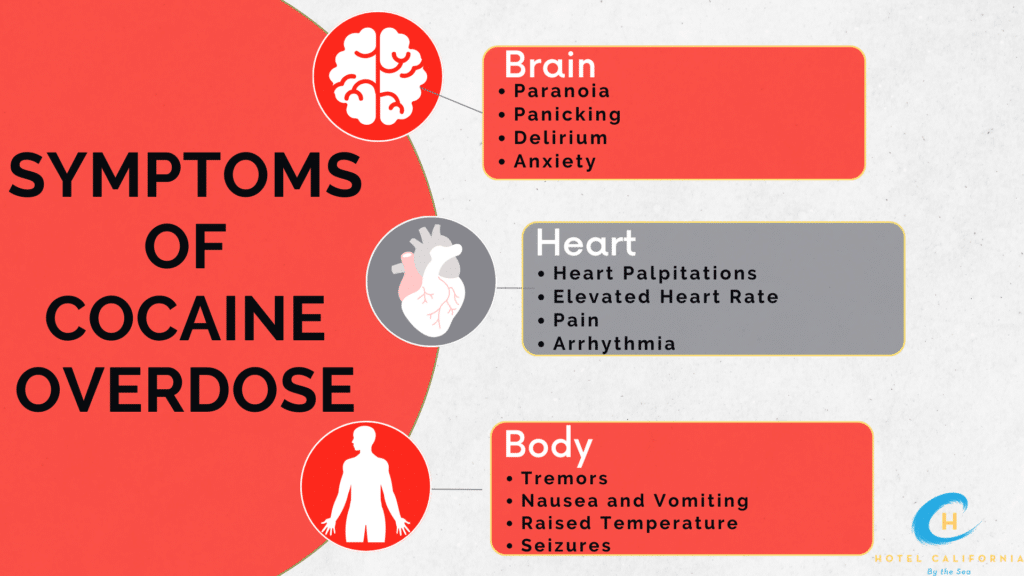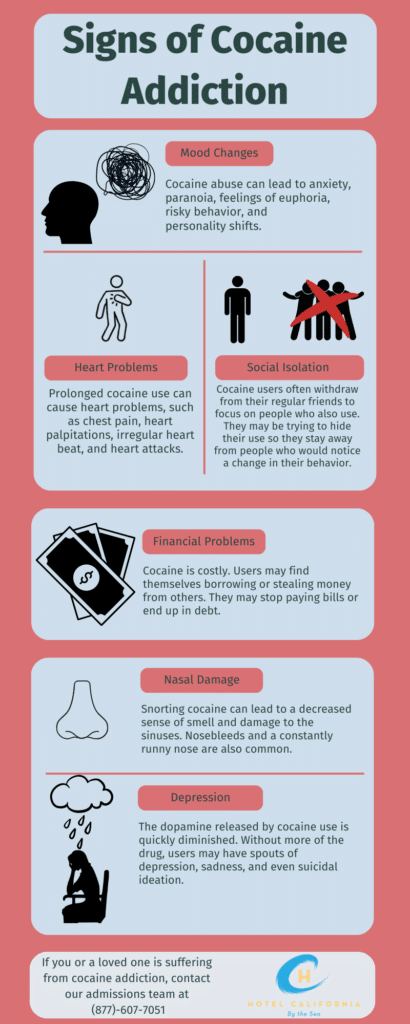What are the Effects of Cocaine Overdose?
Death from drug overdose has continued to explode in the U.S. A new wave of overdose emergencies is seeing Fentanyl mixed with stimulant substances such as cocaine or heroin. It is the latest polydrug combination causing overdose, addiction and death. According to the National Institute on Drug Abuse, the combination of opioids and stimulants is often referred to as “speedballing” and is a dangerous combination that causes an intense high. Studies found that an estimated 80% of overdose deaths in 2021 involved cocaine and an opioid. It has also been labeled as the 4th wave of the opioid crisis. But let’s take a look at cocaine’s impact on this new wave of the drug overdose crisis.
Cocaine use has spiked in popularity. It is especially prevalent in people ages 35-44 with as many as 1,800 Americans experiencing cocaine for the first time each day. In 2020, a reported 1.3 million people in the U.S. used cocaine. Cocaine is a highly addictive drug. Its psychological addiction can be one of the most difficult aspects of addiction to overcome. With the rise in cocaine use, what are the risks for cocaine overdose?

What is Cocaine?
Cocaine is a powerful stimulant substance. It is derived from the leaves of the coca plant native to countries in South America such as Colombia, Peru and Bolivia. These countries also produce about 90% of the cocaine powder found in the U.S. The DEA labeled cocaine as a Schedule II drug under the Controlled Substances Act due to its high potential for abuse.
A mostly illegal street drug, cocaine can come in many different forms. There are three main types of cocaine. Cocaine hydrochloride is a fine white powder that is often mixed with other substances such as cornstarch, talcum powder or flour. They can also be combined with other stimulant amphetamines or synthetic opioids. It is cut with these substances to create an increased drug profit without actually producing more drugs. It gives off a bitter numbing taste. Freebase cocaine also comes in a white powder form, but is more pure without added containments. Crack cocaine comes in the form of crystal-like rocks ranging in colors from white, cream, pink or yellow due to its impurities. Cocaine is ingested through snorting, rubbing on gums or dissolved and injected directly into the bloodstream.
Street names for cocaine include coca, coke, crack, crank, flake, rock, snow and blow.
According to the Centers for Disease Control and Prevention, in 2019, about 1 in 5 fatal overdoses involved cocaine use. Cocaine is a central nervous system stimulant that can produce feelings of high energy and euphoria. Cocaine works by increasing the levels of dopamine, a natural chemical messenger. Dopamine affects various functions of control, movement and reward in the brain. Cocaine prevents dopamine from being recycled back into the body causing large amounts of build up and floods the brain with dopamine in the reward system. This strongly reinforces drug-seeking behaviors and stops normal receptor communication in the brain. Over time, tolerance to feelings of high reward is built and addiction can develop.

Signs and Symptoms of Cocaine Overdose
Can you overdose on cocaine? Yes. Like any other highly addictive, mind-altering substance, it is possible to overdose while using cocaine. Even the smallest amounts of cocaine can cause an overdose. In 2018, an estimated 14,000 people suffered from cocaine-related overdose deaths.
The risks for overdose become even greater when mixed with other substances such as alcohol or opioids. Unlike opioid overdose, which can be overturned and treated with naloxone, there is no cure for a cocaine overdose. A cocaine overdose can be detected by the following symptoms:
- Irregular heart rate
- Heart attack
- Seizures and convulsions
- Stroke
- Difficulty breathing and rapid breathing
- High blood pressure
- Fever
- Hallucinations
- Extreme agitation, sudden mood changes or violent behavior
- Anxiety
- Chest pain
- Stomach pain
- Nausea or vomiting
- Paranoia, panic or confusion
Cocaine overdose is mostly caused by the strain and stress it can inflict on the cardiovascular system. Users are at high risk for developing cocaine toxicity which includes symptoms such as heart attack, stroke and coma.

How much Cocaine does it take to Overdose?
A person’s relationship with cocaine can be a determining factor in how much cocaine it takes to overdose. A person’s history with cocaine can determine their tolerance and ability to absorb the drug. Some people can overdose on a small amount, while others will need to take larger amounts of the drug to feel its effects or be susceptible to overdose.
Many factors can contribute to cocaine’s ability to cause an overdose. Prominent factors can include a user’s age, weight, sex, drug history, overall medical history, the purity of the drug and how the drug was ingested. A combination of a few or all of these factors determines how much cocaine can cause an overdose.
When street cocaine is cut with other unknown substances, it puts users at a higher risk for overdose. For example, if cocaine is cut with another stimulant amphetamine, this could make the drug more potent and dangerous. Meaning even the smallest amount can cause an overdose more quickly than pure cocaine itself.
Cocaine is also often frequently used with alcohol. It is such a common combination that alcohol can often be a trigger for cocaine users. Cocaine mixed with alcohol makes a person feel less intoxicated due to its stimulant effects. This leads the person to feel the need to drink more. This can cause alcohol poisoning, toxicity and overdose.
Check Your Insurance Coverage for FREE
Find out if your insurance covers addiction treatment in minutes. We accept most insurance!
What are the effects of Cocaine abuse?
The effects of cocaine often develop quickly and can disappear just as quickly as they came. The effects can last anywhere from a few minutes to an hour depending on the method of ingestion and the type of cocaine used. In general injecting or smoking cocaine produces a quicker and stronger high. However, it is often shorter lasting. The effects from snorting can last anywhere from 15-30 minutes, while the effects from smoking cocaine can last anywhere from 5-10 minutes.
Common side effects of cocaine abuse include:
- Extremely happy energy and mental alertness
- Intense euphoria
- Hypersensitivity to light, sound and touch
- Irritability and restlessness
- Anxiety
- Insomnia
- Malnourishment due to decreased appetite
- Development of movement disorders such as Parkinson’s disease
- Cardiovascular issues such as irregular heartbeat, stroke, cardiac arrest
- Cocaine psychosis includes paranoia, hallucinations and unusual thoughts and behaviors
When snorting cocaine, over time users can experience a loss of smell, nosebleeds, frequent runny noses and the development of issues with swallowing. Users who frequently smoke cocaine can develop a cough, asthma, respiratory distress and a higher risk of infections like pneumonia and bowel decay. Users intravenously injecting cocaine, are at higher risk of developing HIV, Hepatitis C, soft tissue infections, collapsed veins and other blood-borne diseases. Injecting cocaine also leads users to a higher risk of overdose.
Reach out to Hotel California by the Sea
We specialize in treating addiction and other co-occurring disorders, such as PTSD. Our Admissions specialists are available to walk you through the best options for treating your addiction.
Treatment for Cocaine Addiction
Over time, cocaine can affect every aspect of the body causing changes to brain cells, nerve cells, proteins and even genetics. Cocaine addiction is one of the most difficult to overcome. Professional behavioral health treatment centers such as Hotel California by the Sea provide evidence-based treatments for all clients struggling with cocaine addiction. Within our three locations in California, Ohio and Washington State, clients in need of treatment for cocaine addiction can receive intensive and supportive care to help them overcome their substance struggles.
We offer varying levels of care including detox, inpatient residential programming and outpatient programs such as PHP and IOP. Rigorous therapies such as CBT, DBT and EMDR therapy have been proven to help clients treat any co-occurring mental health conditions that often accompany a cocaine addiction. Our unique therapies provide clients with the emotional and psychological support they need during recovery. Hotel California by the Sea understands that addiction treatment is not a one-size-fits-all. Our clients will receive individualized care. As a result, clients will better understand the varying aspects of their addiction and can work to find success and sobriety.
References:
https://www.dea.gov/factsheets/cocaine
https://www.addictioncenter.com/drugs/cocaine/
https://adf.org.au/drug-facts/cocaine/
https://www.healthline.com/health/substance-use/cocaine-overdose-symptoms
https://npaddictionclinic.com/blog/how-much-cocaine-does-it-take-to-overdose/
https://www.medicalnewstoday.com/articles/what-happens-if-you-do-cocaine-once#safety
https://npaddictionclinic.com/blog/how-much-cocaine-does-it-take-to-overdose/
